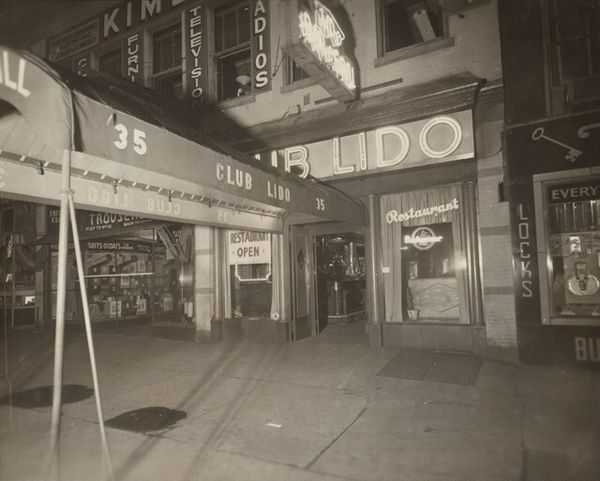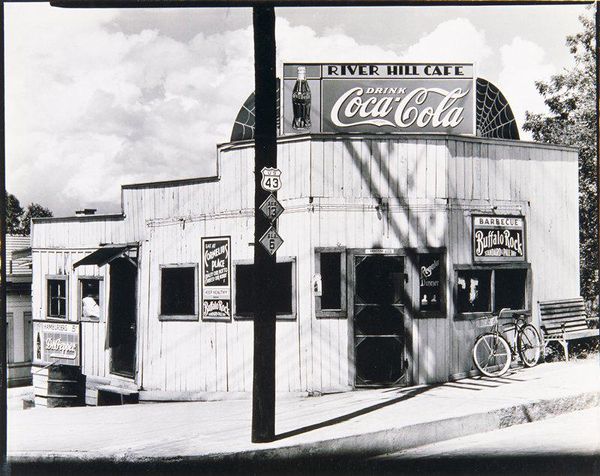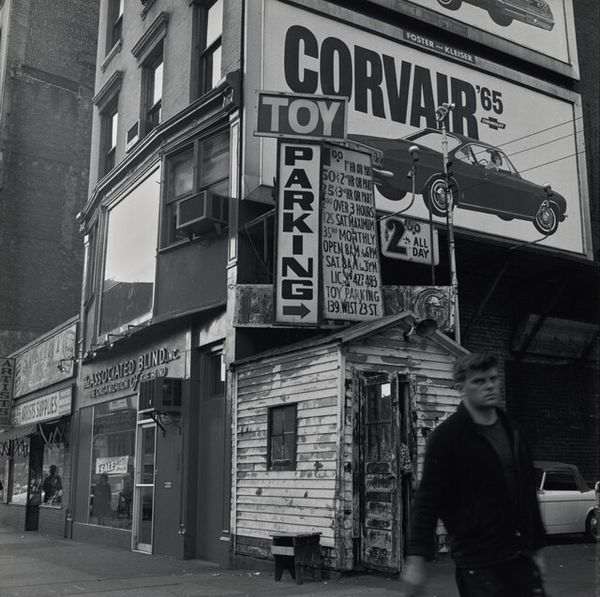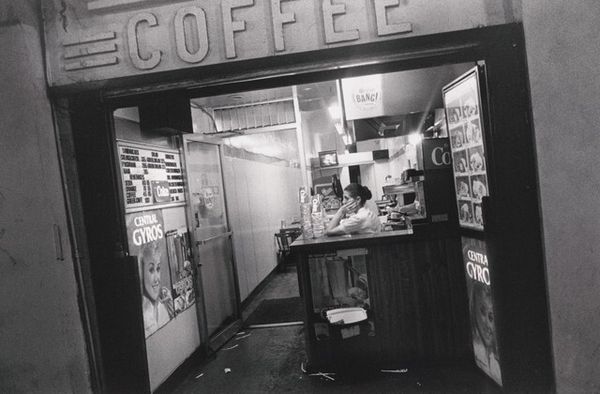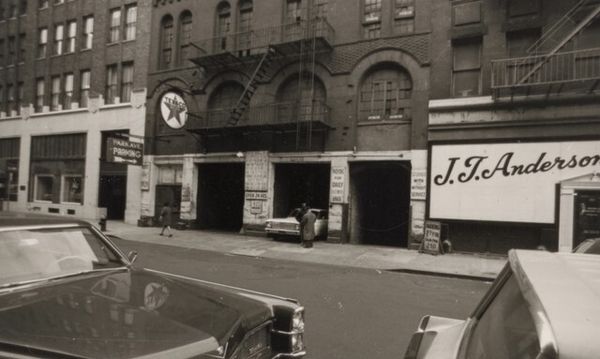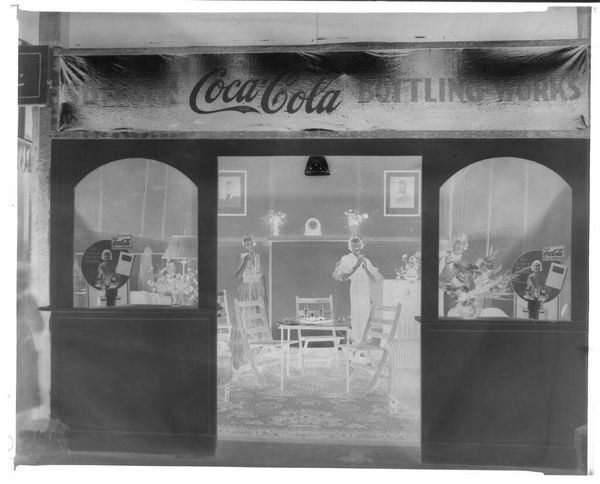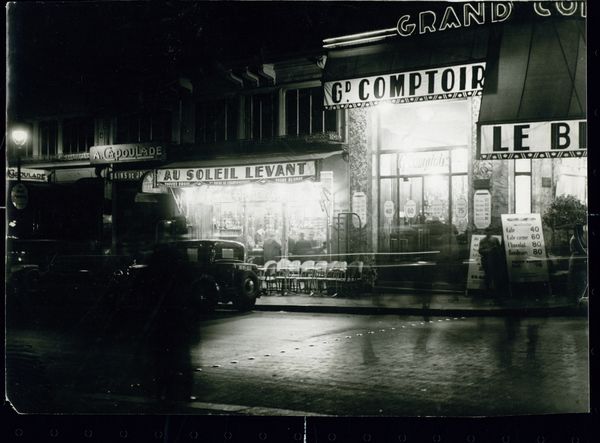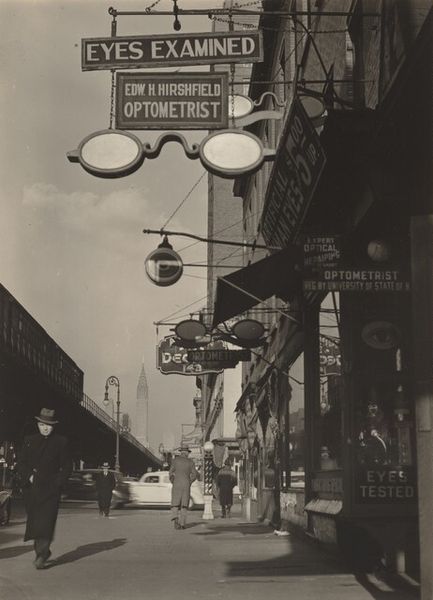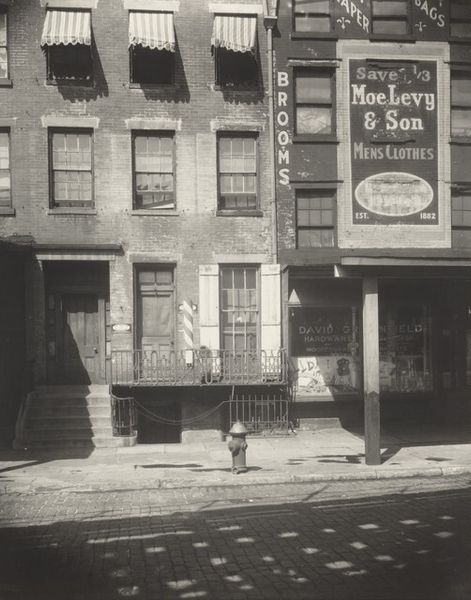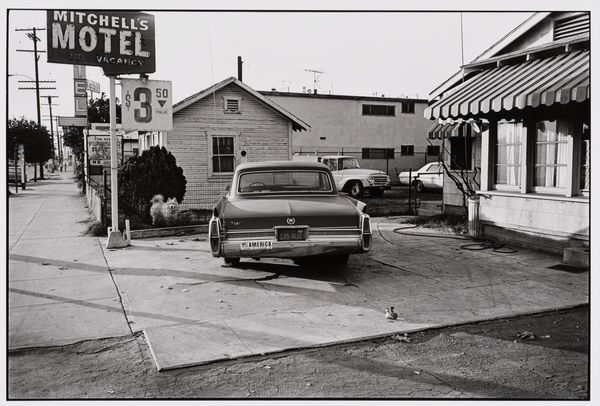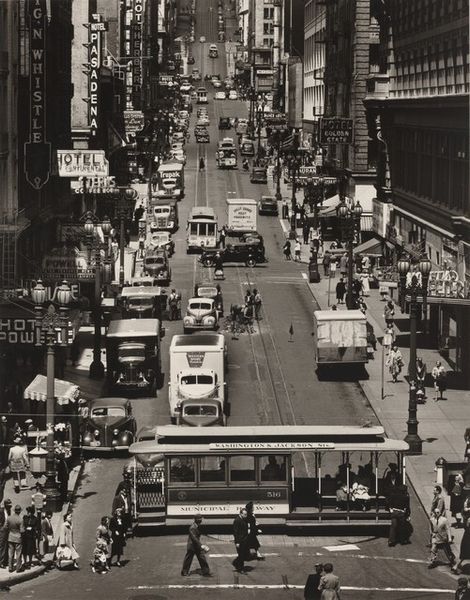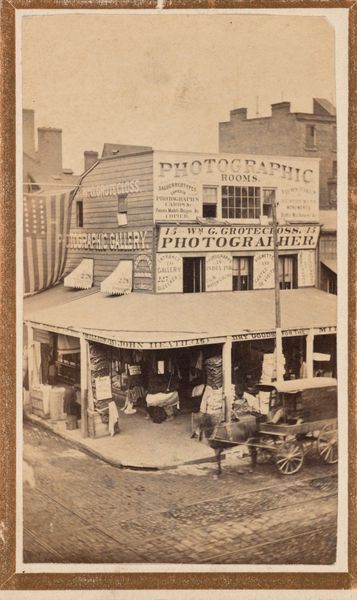
gelatin-silver-print, photography, gelatin-silver-print
#
gelatin-silver-print
#
black and white photography
#
street-photography
#
photography
#
gelatin-silver-print
#
monochrome photography
#
ashcan-school
#
united-states
#
cityscape
#
monochrome
Dimensions: 7 5/8 x 9 5/8 in. (19.37 x 24.45 cm) (image)7 15/16 x 10 in. (20.16 x 25.4 cm) (sheet)14 7/8 x 18 7/8 x 1 1/2 in. (37.78 x 47.94 x 3.81 cm) (outer frame)
Copyright: No Copyright - United States
Art Historian: Welcome. Here we have Walker Evans’s gelatin-silver print, "Street Scene," from 1935. It’s a very typical example of his photography style. Curator: My initial impression is one of layered oppression. The monochrome tones lend it an almost suffocating atmosphere. It's a glimpse into a harsh reality of 1930s America. Art Historian: The photograph is teeming with graphic signage. Consider the "Sun Coffee Shop" advertisement and the more subtle 'Oriental Laundry' sign hanging in the distance. Can these signs be seen as more than just businesses? Curator: Absolutely. "Oriental Laundry, NOT in the TRUST." Even the signage speaks volumes about economic disparity and perhaps anti-immigrant sentiment. What does it say about this “trust”, a business system that seems so distant to ordinary citizens. The sheer volume of signage feels almost predatory. Art Historian: There is almost a Babel-like quality to this cityscape. All the imagery, taken together, produces confusion. And it reflects a chaotic era that the camera faithfully captures. Note, also, the prevalence of advertisements aimed at basic needs and temporary comforts – coffee and Coca-Cola. Curator: I see how easily such images feed into a nostalgic view, one of a romantic, gritty past. But we have to push back against glorifying the aesthetics of suffering. Whose story gets told, and who is conveniently cropped out? Art Historian: I concede your point. Still, it strikes me as an interesting tension, between a photograph recording one specific, momentary event and, now, nearly a century later, viewers searching for greater truths that extend far beyond its original context. Curator: Perhaps we are not that different in our viewpoints. Images like “Street Scene” present more than a purely documentary function. They can become tools for activating collective consciousness when they help expose layers of truth, hidden in plain sight. Art Historian: A fitting thought indeed! It’s certainly broadened my reading of signs and symbolism. Curator: For me, it is an exercise in seeing—and more critically evaluating—the many social messages that are hidden in plain sight.
Comments
No comments
Be the first to comment and join the conversation on the ultimate creative platform.
